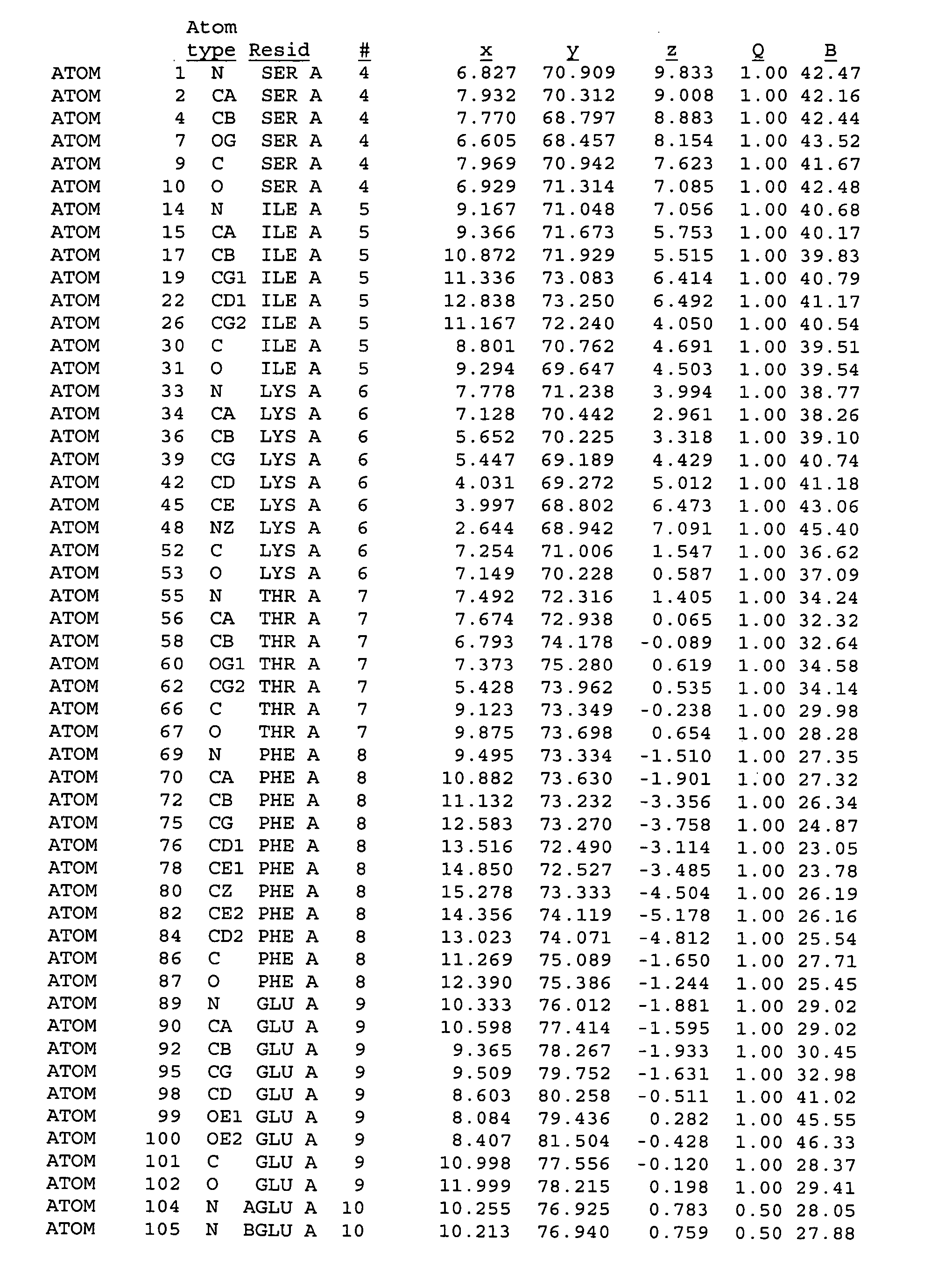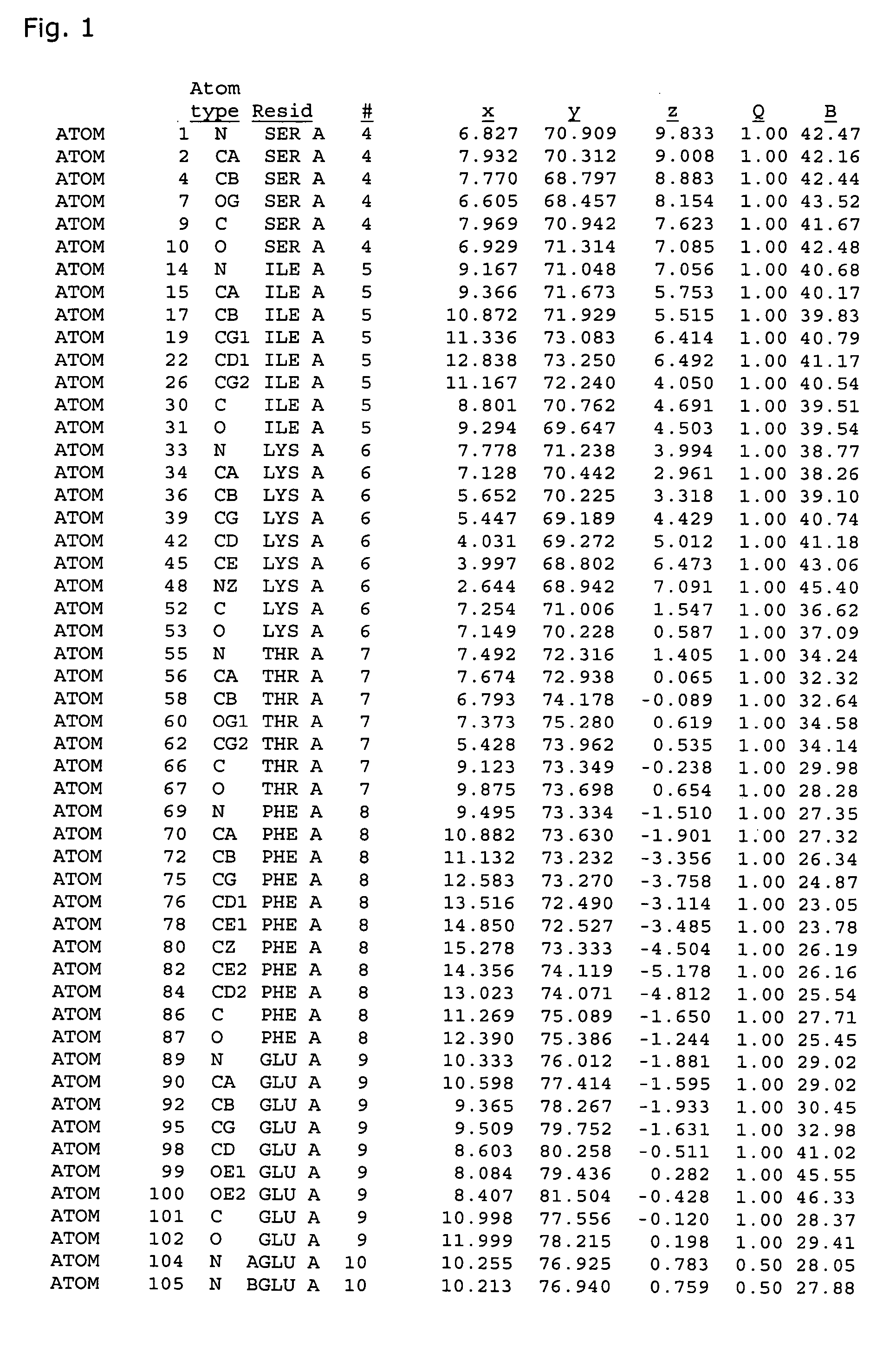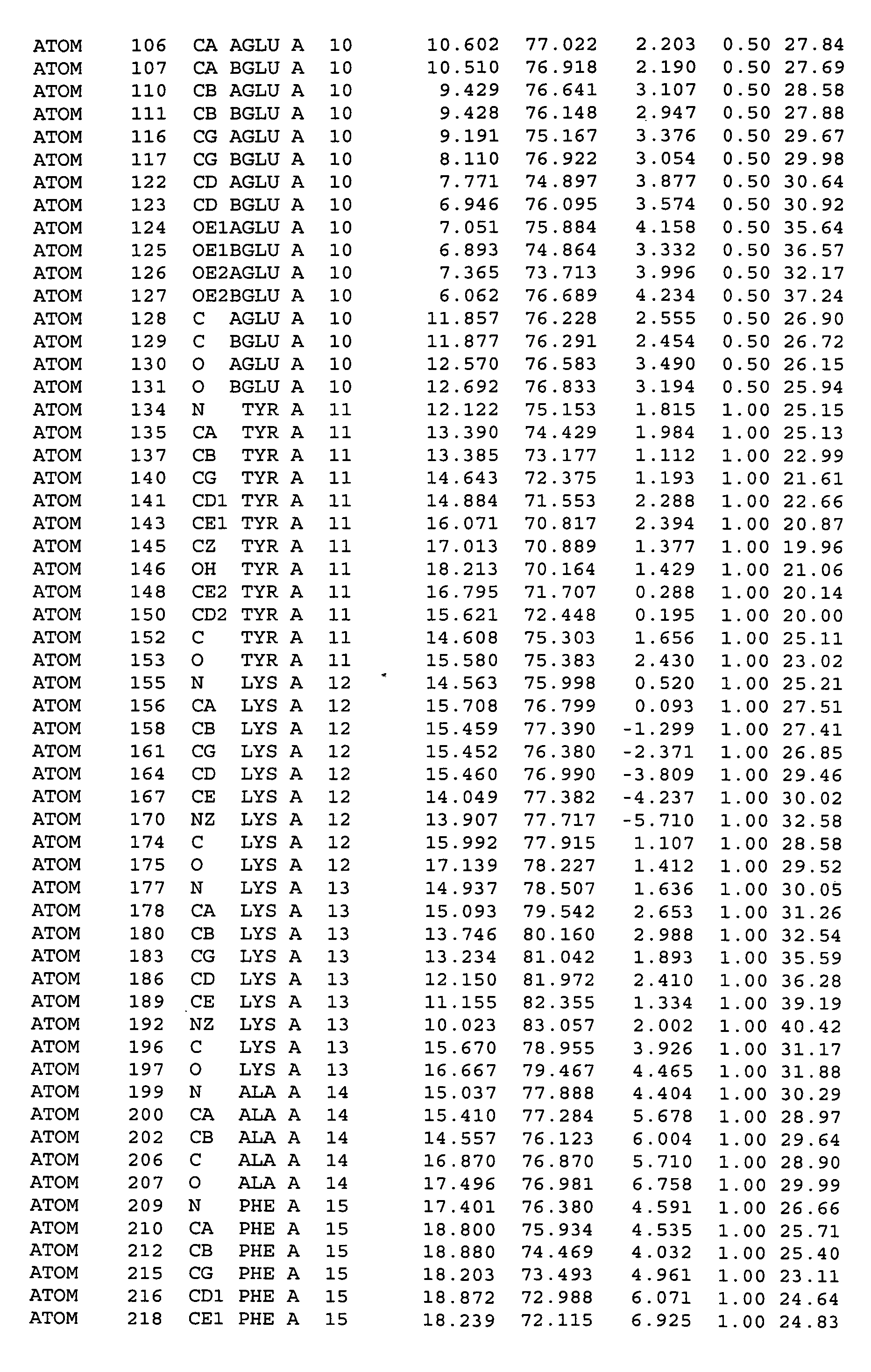Crystal structure of house dust mite allergen Der p 1
a technology of house dust mites and crystal structures, which is applied in the field of three-dimensional structure of house dust mite allergen der p 1, can solve the problems that the carbohydrate side chain is an obstacle to crystallisation and thus achieve the effect of facilitating single crystal crystallisation and reducing protein concentration
- Summary
- Abstract
- Description
- Claims
- Application Information
AI Technical Summary
Benefits of technology
Problems solved by technology
Method used
Image
Examples
example 1
Crystallization of rproDer p 1 mutant 01611
[0109] A mutant of rproDer p 1 was obtained using recombinant techniques. The mutant had the following mutations: C114A and N132D. The mutant was called 01611. As explained above the mutation C114A was introduced to reduce or eliminate the proteolytic capacity of proDer p 1, and the mutation N132D was introduced so as to obtain a non-glycosylated protein. Previous experimental studies had shown that such mutations were necessary to obtain crystallisation of proDer p 1. The sequence of the mutant crystallised consisted of the sequence shown in FIG. 1 comprising a propeptide sequence consisting of amino acids 1-80, a sequence corresponding to the mature form of Der p 1 consisting of amino acids 81-302, and a linker sequence consisting of amino acids 303-306, and a His tag consisting of 6 His residues. The linker and His tag do not have any impact on the structure of the molecule.
[0110] rproDer p 1 01611 crystals were grown by the vapour dif...
PUM
| Property | Measurement | Unit |
|---|---|---|
| crystal structure | aaaaa | aaaaa |
| unit cell dimensions | aaaaa | aaaaa |
| three-dimensional structure | aaaaa | aaaaa |
Abstract
Description
Claims
Application Information
 Login to View More
Login to View More - R&D
- Intellectual Property
- Life Sciences
- Materials
- Tech Scout
- Unparalleled Data Quality
- Higher Quality Content
- 60% Fewer Hallucinations
Browse by: Latest US Patents, China's latest patents, Technical Efficacy Thesaurus, Application Domain, Technology Topic, Popular Technical Reports.
© 2025 PatSnap. All rights reserved.Legal|Privacy policy|Modern Slavery Act Transparency Statement|Sitemap|About US| Contact US: help@patsnap.com



